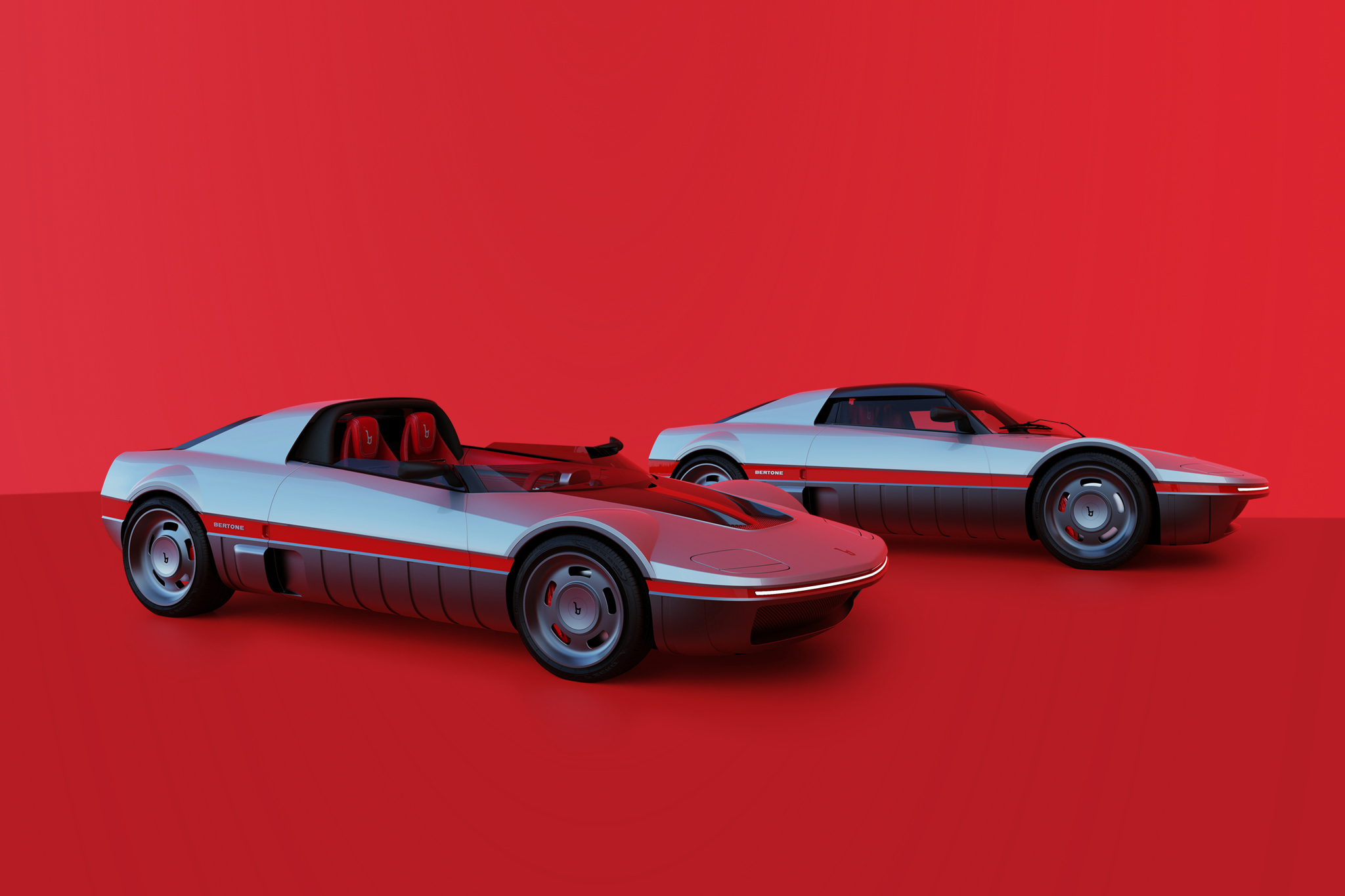Pagani Huayra Roadster BC
The Italian sports car manufacturer Pagani has now presented a car in San Francisco that should never actually exist – and they did it in a way that is unique in the history of the automobile. But let’s start with the beginning. The Huayra is only the second model in the 20-year history of the Italian luxury brand. Introduced in 2011, the number of units was limited from the outset to 100, all of which have since been sold and delivered. This was followed in 2016 by the Pagani Huayra BC, named after the brand’s first customer and personal friend of founder Horacio Pagani, Benny Caiola, who passed away in 2010. The BC is a performance enhanced and weight reduced version of the Huayra Coupé, also officially limited to only 20 copies.
The third member of the Huayra family, the Roadster, like its closed counterpart, has been limited to 100 units and debuted at the 2017 Geneva Motor Show, all of which have already been sold before the presentation. In terms of model history, one may now conclude that a Huayra Roadster BC would be the next logical step, but it wasn’t. Originally this model wasn’t planned by Pagani. Only when a good customer surprised the team around Horacio Pagani in 2015 with a blank transfer with the subject ‘Huayra Roadster BC’ and other customers did the same, the opinion of the Argentinian car maker, who lives and works near Modena in Italy, changed and the car, which was never supposed to exist, finally became reality. The Pagani Huayra Roadster BC will be produced in 40 units from spring 2020 and, as you can imagine, is already sold out.










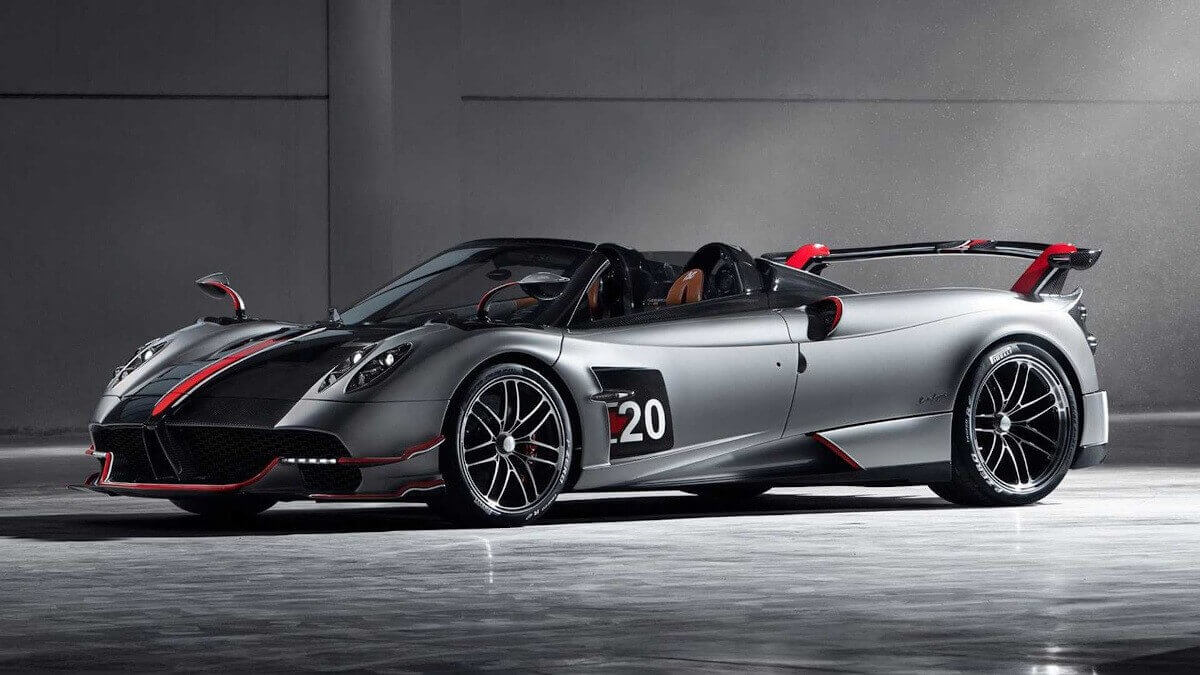







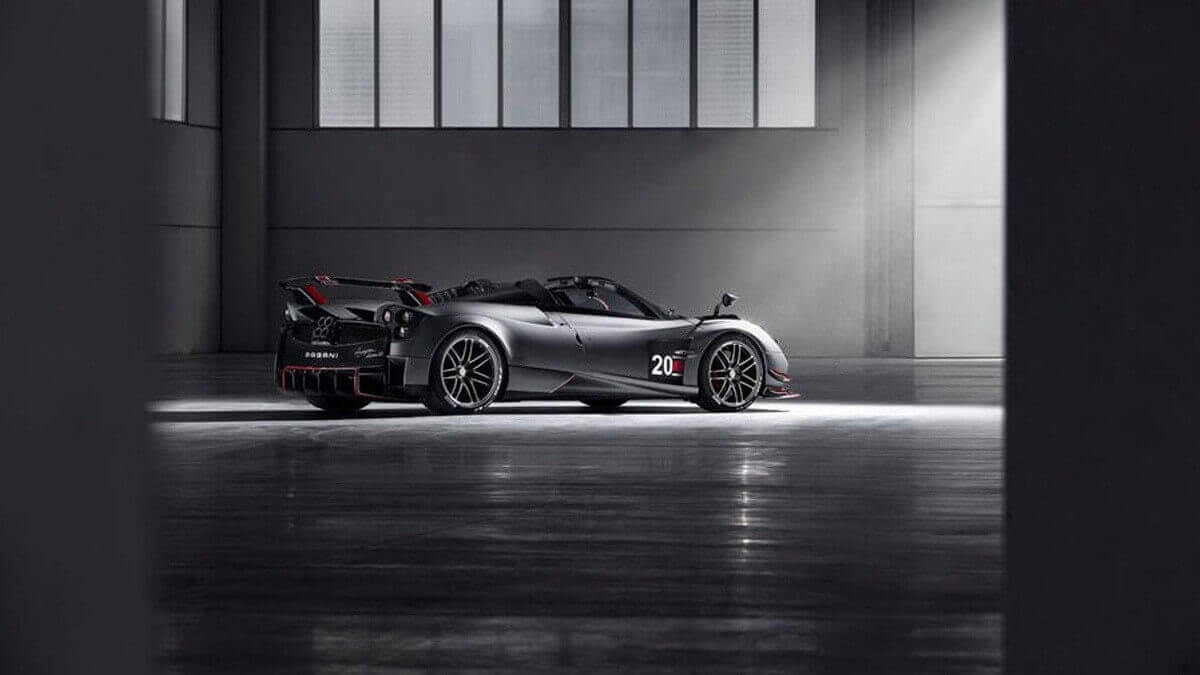



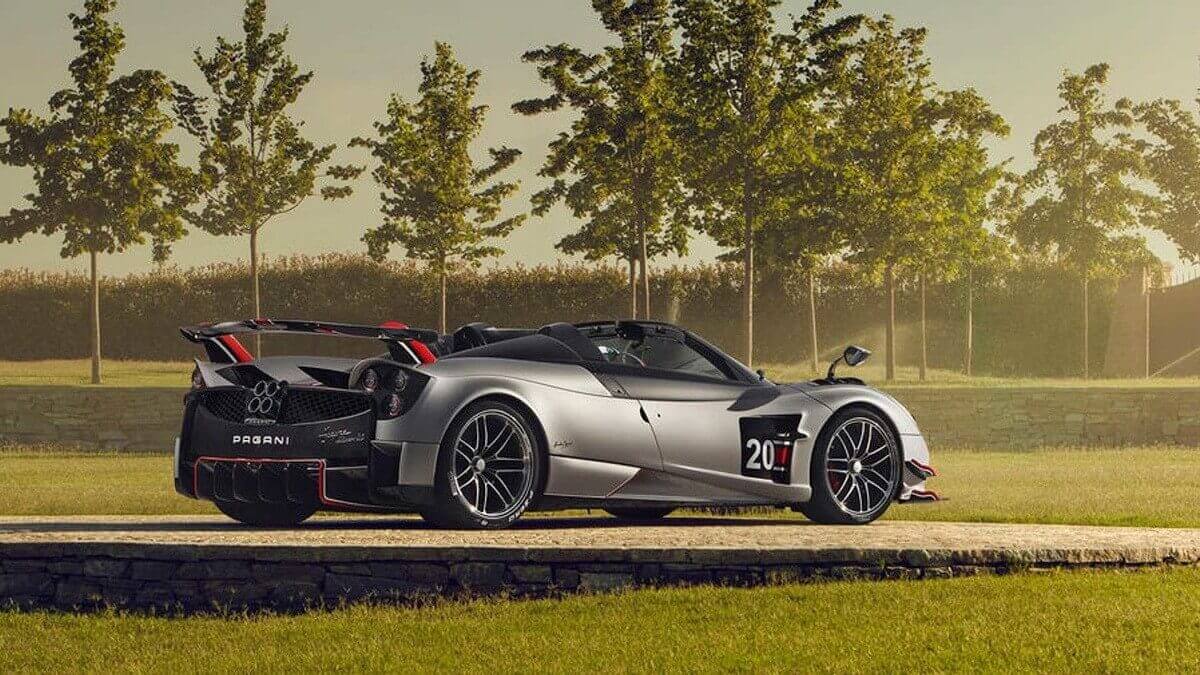



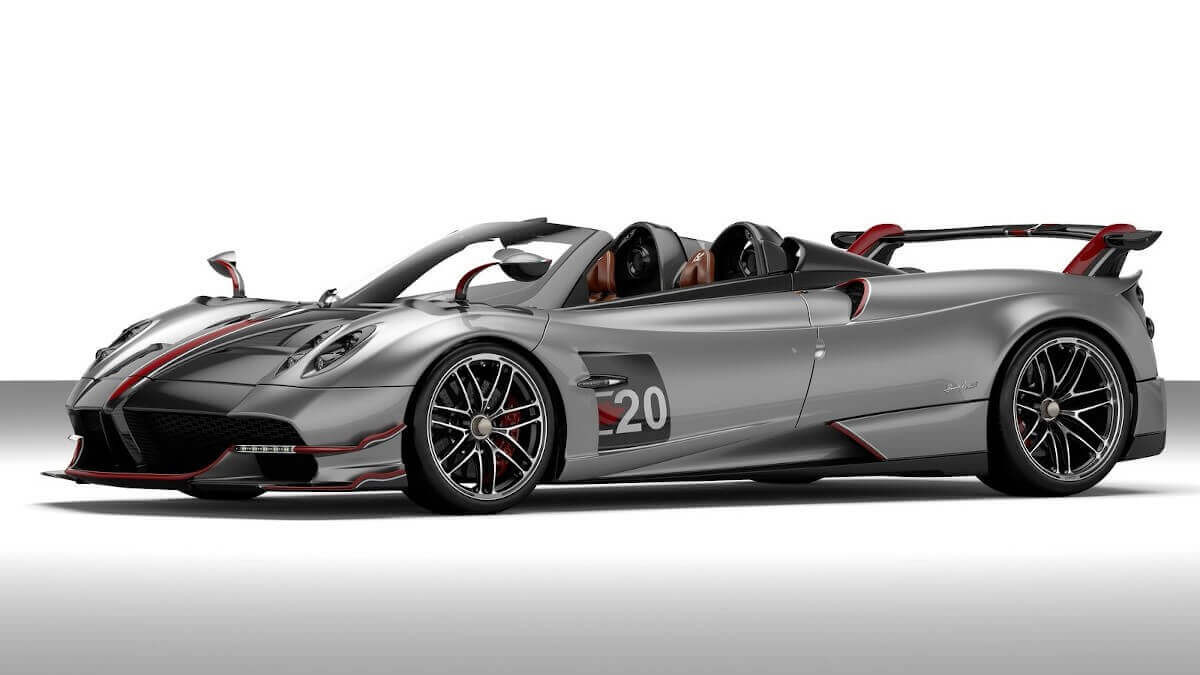



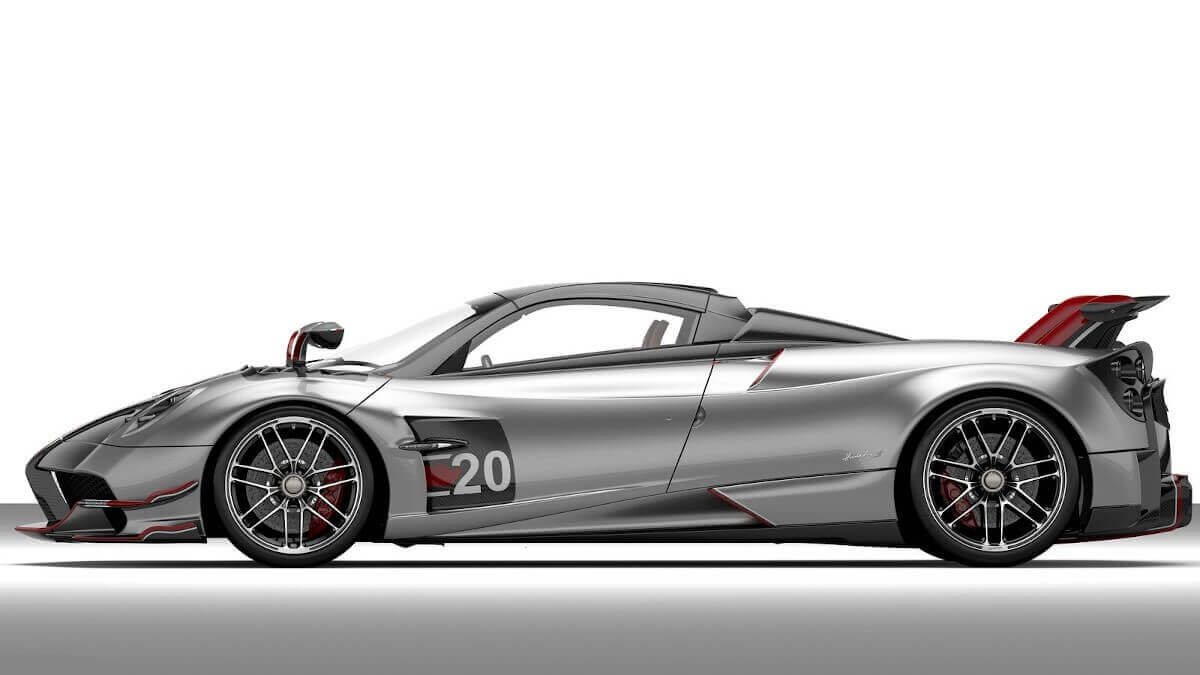

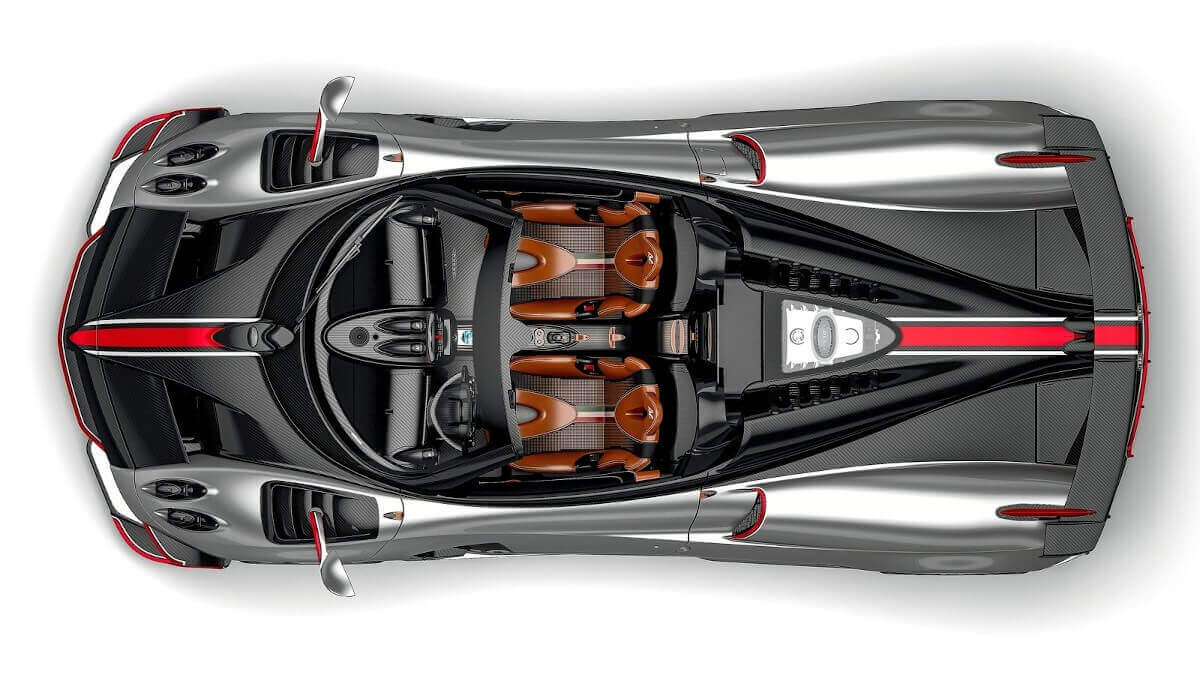



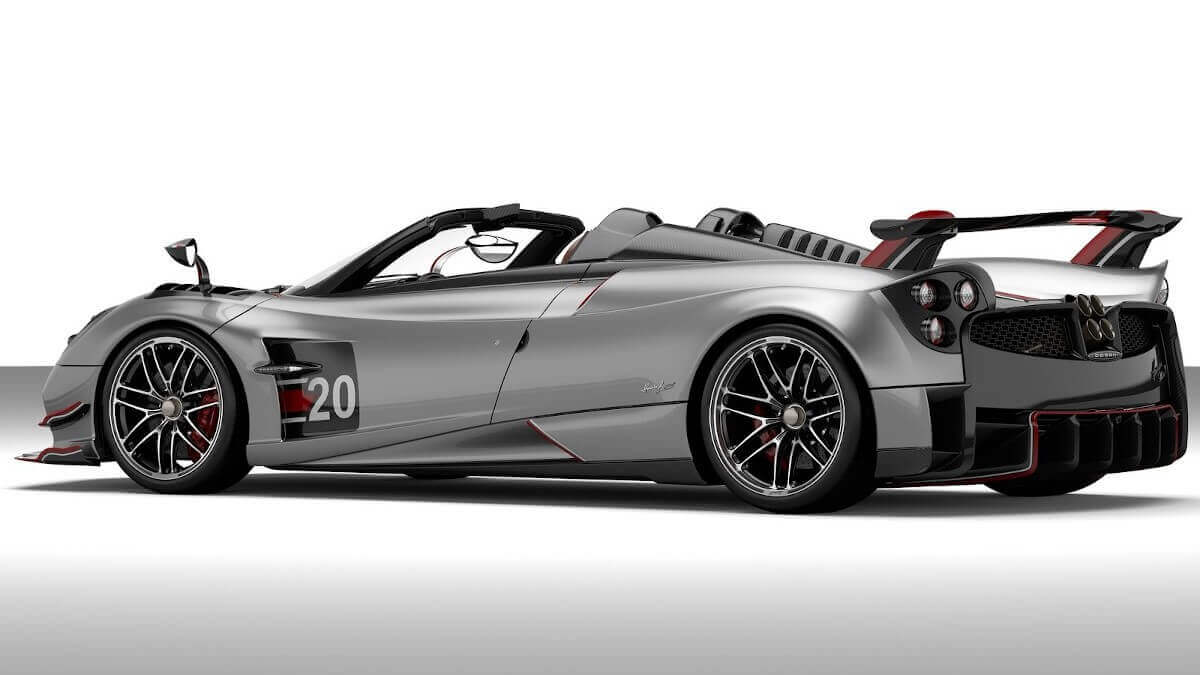



Now you may ask yourself, at which event the world premiere of this vehicle took place. The Festival of Speed in Goodwood, England, is already over and large car shows are in short supply during the summer months. If you are thinking of the Monterey Car Week in California now, you are not too far off. The Roadster BC will actually be on display there, but Pagani was breaking new ground for its world premiere. Last week a first teaser on Instagram was used to fuel the interest of the fans, now the cover of the open hypercar was lifted. The whole thing happened at Zynga Inc. in San Francisco, one of the world’s leading interactive entertainment companies. The Huayra Roadster BC becomes a part of the mobile game ‘CSR Racing 2’ and becomes a special bonus for especially successful players in this game, of course only virtually.
But instead of mobile games, let’s focus on the real-life Huayra Roadster BC. You might think the development department did a relatively simple job of combining the Roadster body with the technical goodies of the BC Coupé, but that doesn’t work with Horacio Pagani’s attention to detail and pursuit of perfection. If you take a closer look at the new Roadster, you can see the sum of news. At the presentation, Pagani explained his favourite topics when it comes to the development of automobiles. Aerodynamics and weight saving are most important to the Argentinean. His goal for the Roadster BC: More downforce and even less weight. Sounds quite simple at first glance. With an already highly developed vehicle like the Huayra BC Coupé, however, this borders on witchcraft. So Pagani revised the aerodynamics in detail. The front spoiler and the side splitters were completely redesigned. The engineers adopted the wave-like shape from modern Formula 1. An important part of the aerodynamic concept is the rear wing. Originally, the developers experimented with a much larger version, but through targeted precision work such as the lateral flaps on the wing, it was possible to reduce the format considerably and still achieve the self-imposed goal of 500 kilograms of downforce at a speed of 280 kph (174 mph).
Pagani also paid special attention to braking behaviour. In order to prevent the front end from immersing itself heavily when braking, the Italians use electronically controlled dampers that slightly lift the front end of the Huayra Roadster BC and thus shift the weight to the rear. The developers also put special effort into the wheel-tire combination. Especially when one considers the small number of only 40 vehicles. The alloy rims have been completely redeveloped in cooperation with the manufacturer APP. The Roadster also rolls on special Pirelli tires of the type P Zero Trofeo R, the mixture of which has been specially matched to the new Pagani. The result should lead to a slight change in the color of the face of some of the co-drivers, as according to Pagani lateral acceleration values of up to 1.9 g are possible in corners. For comparison, a Bugatti Chiron reaches a maximum of 1.5 g. Certainly also a merit of the extremely stiff titanium-carbon monocoque with screwed on steel subframe, which was reinforced once again for the Roadster BC. The very moderate kerb weight of only 1,250 kilograms also plays a not insignificant role.








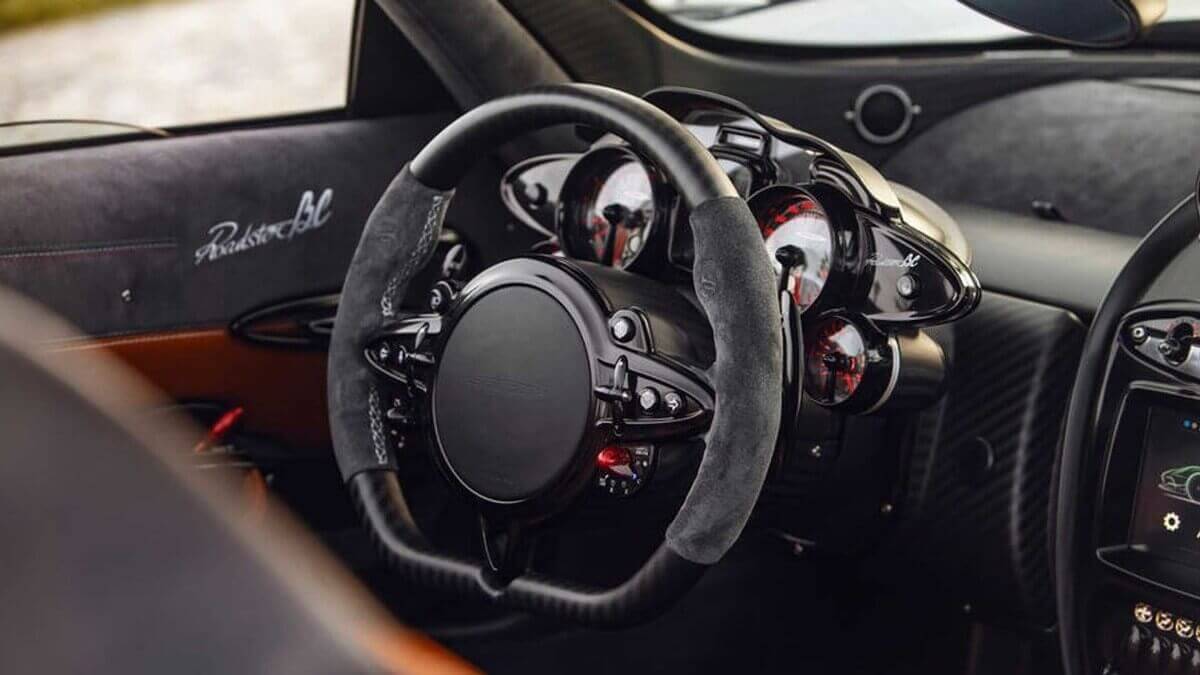

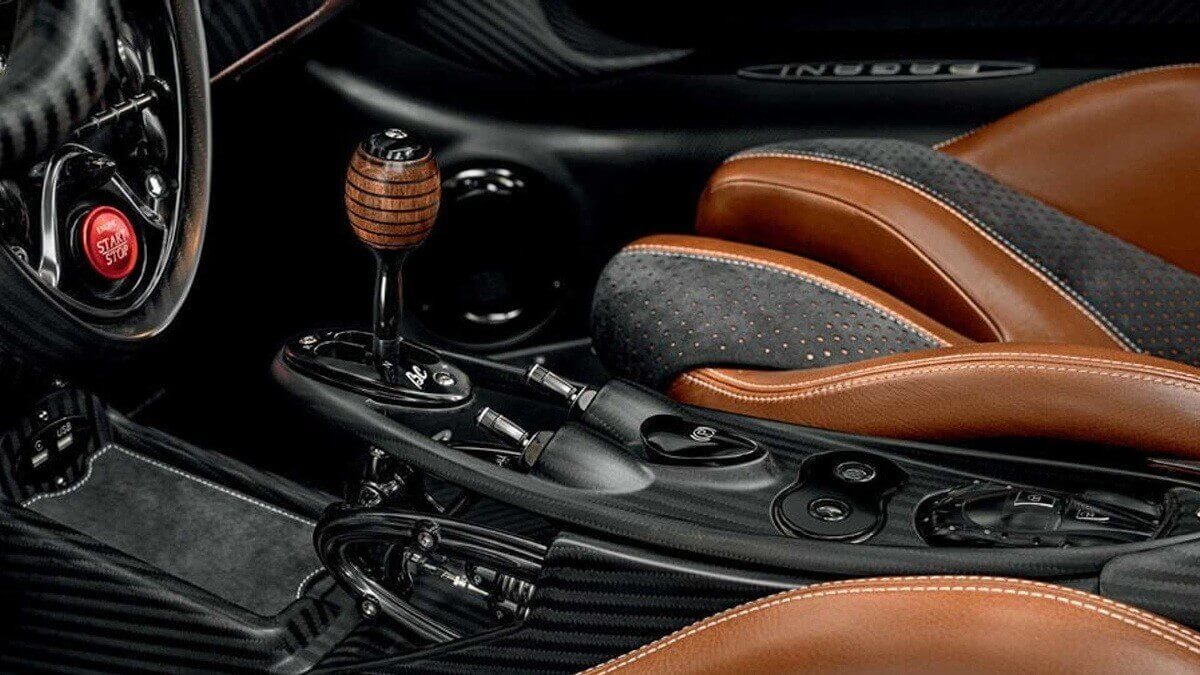







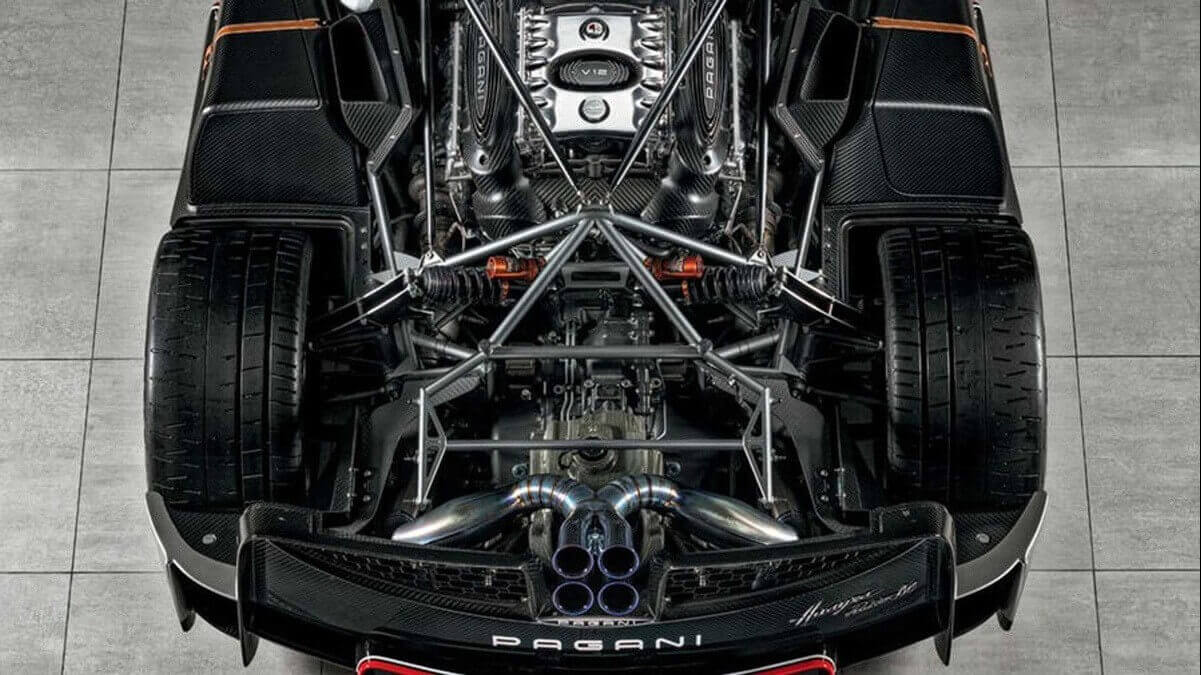





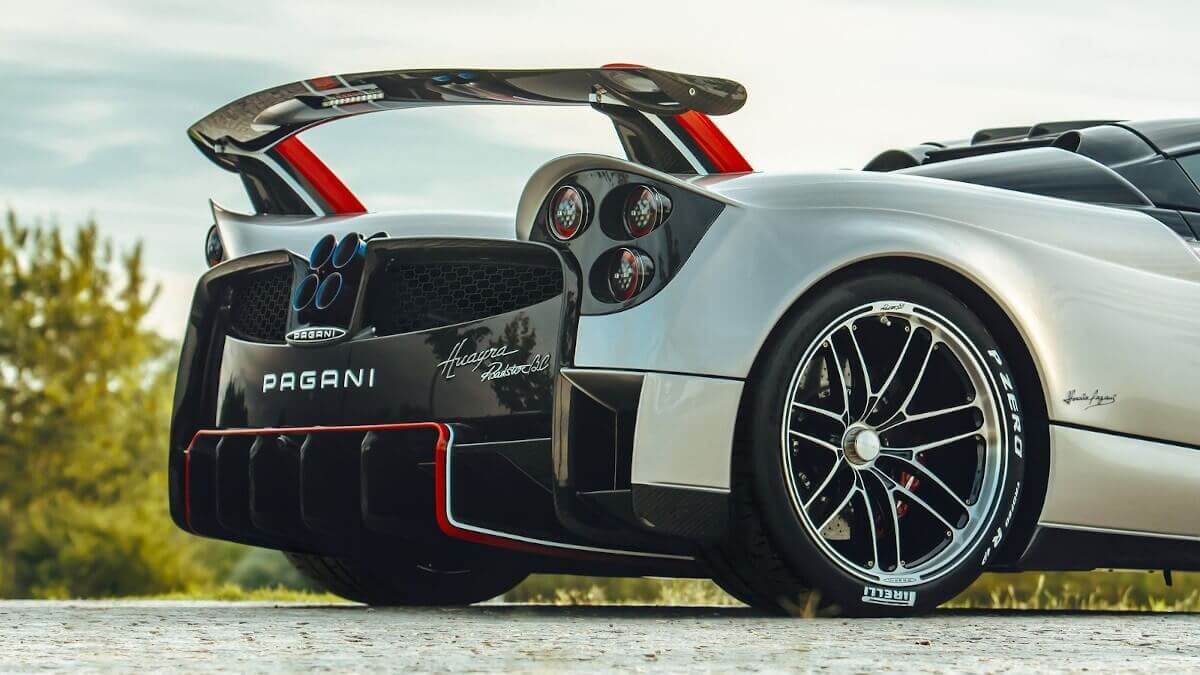

For the impressive propulsion of the Huayra Roadster BC, Pagani trusts the engine specialists from Mercedes-AMG in Affalterbach, Germany, as in the 20 years of brand history before. Together with Pagani, they have once again thoroughly revised the V12 biturbo engine from the BC Coupé for the new Roadster. The engine now has larger turbochargers whose breahting air is cooled to a tolerable level by a total of four intercoolers. The result is an output of 802 hp and more than 1,050 newtonmeters of torque. Pagani doesn’t yet mention official driving values, but it is to be expected that the topspeed will be well over 350 kph (217 mph) and that the acceleration time of 0-60 mph or 0-100 kph will probably start with a 2. Contrary to the general trend, Pagani continues to rely on a sequential seven-speed gearbox from the specialist company Xtrac instead of a heavier dual-clutch gearbox in order to save some weight. The clutch of the Roadster BC has been completely redesigned in comparison to the Coupé and now only weighs 6 kg instead of 10 kg, but gear changes are also faster by 30 percent. On the other hand, the fundamental revision of the engine already ensures compliance with the upcoming EURO 7 emissions standard, which promises to be valid until at least 2025. The exhaust system with its four central tailpipes has been a trademark of the sports cars from San Cesario sul Panaro in the Italian automobile mecca Emiglia Romagna right from the start. Nevertheless, Pagani has done some acoustic fine-tuning on the twelve-cylinder music of the Huayra Roadster BC and has added two more exhaust pipes directly from the catalytic converters to concealed outlets in the rear diffuser, promising an even more impressive sound.
In addition to the technical details and performance, the price of 3.2 million Euros plus local taxes is of course also a very impressive value, especially when compared to the closed Huayra BC, which was sold in 2016 for 1.6 million Euros. But if one considers the technical effort that this relatively small manufactory puts into the development and production of its vehicles, this amount is put into perspective. The Huayra Roadster BC is mainly made of carbon fiber. Only Pagani doesn’t just use normal carbon, but has developed a new generation of the lightweight material carbon-titanium, an extra-strong combination of carbon and titanium. This material is up to 20 percent stiffer than before. Unfortunately it is also 450 percent more expensive. The value of the screws used in the Roadster BC exceeds 100,000 Euros. Each one is made of titanium and has either the brand logo or the brand lettering engraved on it. These details show the attitude of Horacio Pagani, who views his vehicles freely after Leonardo da Vinci as a combination of science and art.
Images: Pagani



